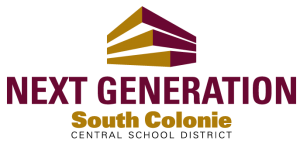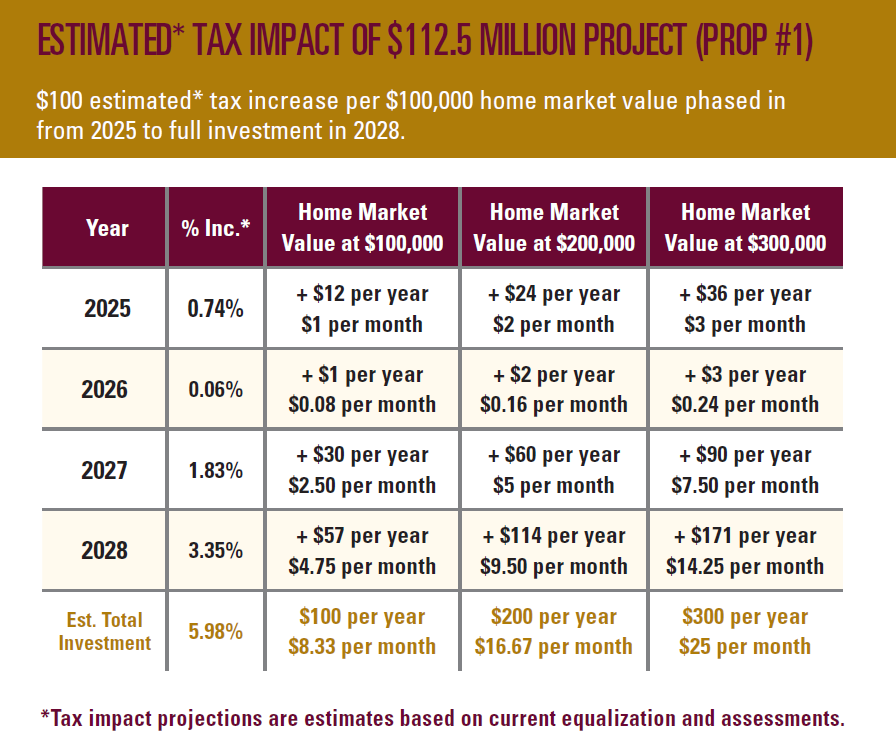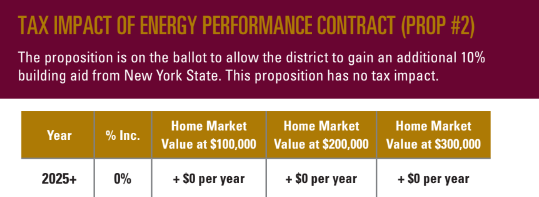
The South Colonie Central School District has a desire to update its current educational spaces to make them more modern and appropriate for its students while building upon the infrastructure that supports a safe and healthy learning environment for all. Below is a list of frequently asked question about the proposed capital project.
Q: What is a capital project?
A: Just like a home, school facilities need regular attention and upkeep to continue to operate year after year as originally intended. The New York State Department of Education requires school districts to inspect its property regularly and maintain a five-year capital improvement plan. Capital improvement projects are a way for school districts to complete more substantial facilities work, including upgrades, renovations and replacements as compared to regular maintenance.
Q: Why doesn’t the district complete capital construction work as part of the annual school budget?
A: Routine repairs and maintenance are funded through the district’s general fund as part of the annual school district budget. Larger projects and capital improvements cannot realistically be funded through the annual school district budget. The annual school budget does contain funds to support routine repairs and maintenance of the district’s facilities. However, the cost of more significant projects, like roofing, paving, HVAC work, or major renovations is too costly to be included in the regular operating budget of the district, especially with a cap on the tax levy. By funding these projects as part of a capital project, it allows the district to spread the expense over a longer period of time and to fund this work in large part through New York State Education Department Building Aid with less financial impact on local taxpayers. For every dollar borrowed, South Colonie will be reimbursed approximately 65.5% for all eligible expenses.
Q: Why do we need a new capital project if work is still being completed from the last one?
A: The lifespan of a school district capital project is typically 3-5 years, from start to finish, including development, community input, bidding, New York State Department of Education approval, and construction. South Colonie’s approach historically to capital improvement projects has been to complete smaller projects every 5-6 years rather than less frequent, larger, more costly projects. As a result, the aging facilities are in need of significant improvements that will cost more in the long run if not addressed.
Q: How are items in the project determined?
A: New York school districts are required to conduct regular building condition surveys and to develop multi-year facilities plans, which can help identify aging, outdated or energy inefficient school infrastructure and facilities issues related to health and wellness. The majority of the projects identified for Next Generation Colonie were part of the district’s five-year capital facilities plan. In conjunction with the strategic planning conducted in 2021-22, the district prioritized programmatic needs and infrastructure needs by building.
Q: Who would benefit from the project?
A: While faculty, staff and the community as a whole would benefit from a capital improvement project, the group that would see the biggest impact is current and future students. The projects proposed in Next Generation Colonie will provide South Colonie students with more comfortable, safer, and secure learning environments through modernized learning spaces, improvements to aging educational, athletic and program spaces and projects that address health, safety and technology infrastructure updates.
Q: How does this project benefit the community?
A: South Colonie is recognized as one of the leading school districts in the Capital Region and to continue to serve our community well, our learning spaces must be maintained and updated to prepare today’s students for tomorrow. The addition of new outdoor spaces such as a turf field, plus upgrades to playground equipment will benefit the community, as well as South Colonie students. South Colonie families can use playgrounds for recreation when school is not in session, and the new, improved educational spaces and athletic facilities would be available for community use by civic organizations and youth sport groups. These benefits can positively impact home values too. According to the National Association of Realtors, nearly 30% of home buyers list “school quality” as a deciding factor in their home purchase.
Q: What is an Energy Performance Contract (EPC)?
A. An agreement that allows school districts to take budgeted utility and operational costs and re-allocate them into energy saving capital improvements without the need for increased taxes.
Q: Why construct a turf field?
A: To enhance our physical education program by extending the classroom
outdoors and allowing for nearly year round access. In addition to learning
in a classroom, all students in the South Colonie Central School District learn in our gymnasiums and on our playing fields. By constructing a new turf field, South Colonie would have a multi-purpose synthetic turf field that would provide a new instructional space for PE and be lined for multiple sports, including soccer, boys and girls lacrosse, and football. Presently, the field use can be limited due to weather-related conditions. Often, early spring and late fall home games must be rescheduled to sites outside of South Colonie because our grass field is unusable. In contrast, the district anticipates a turf field would be used nearly year round for both athletics and as classroom space for physical education classes.
Currently, many South Colonie athletic teams are forced to rent alternate
practice space at off-site facilities, which can be expensive, costing the South Colonie Athletics Department and team booster clubs upwards of $12,000 per year. Traveling to an alternate site requires an additional time commitment for students, which can take away from homework, family and leisure time. A turf field could also generate revenue for the district through facility rentals to outside groups and organizations.
Q. Are artificial turf fields safe for users?
Numerous in-depth studies have been completed on the artificial turf surface materials, backing and infill materials used for most professionally-installed, artificial grass surfaces. Results, to date, do not conclusively prove that synthetic turf and any of the infill materials adversely affect the players on sport field surfaces.
South Colonie has reviewed extensive information made available by the New York State Department of Health on their website, which covers health and safety information, infection risk, latex allergy and heat stress.
Presently, South Colonie student athletes often use school parking lots for practices when field conditions are not favorable. In the northeast, this is often the case in early spring and late fall. This situation is not ideal and increases the risk of injury. Additionally, our teams must practice indoors far longer than teams that have turf fields at their schools this in turn causes a competitive disadvantage for South Colonie Athletes.
Q: What happens if residents do not approve the proposed capital improvement project?
A: If residents do not approve the proposed capital project in the fall, aging infrastructure as well as comfort, safety and security issues could possibly disrupt students’ instruction and educational environment. South Colonie would have to address these issues as needed and the costs for that work would be paid from the district’s operating budget, without state aid reimbursement. Work that is required to be done on an emergency basis is likely to be more costly and much more disruptive to student learning.
The district could choose to revise the capital project and offer voters a new proposal at a later date; however this delay could result in increased costs.
Q: Who can vote on the proposed project?
A: Qualified voters must be age 18 or older, a U.S. citizen, and a resident of the district for at least 30 days prior to the vote.
Q: When and where will the vote take place?
A: The vote is scheduled for October 18, 2022 between the hours of 11 a.m. and 9 p.m. at the district’s five elementary schools.
Q: If the project is approved, when will construction begin?
A: If approved by voters, work would occur in three stages with planning and design occurring simultaneously.
-
- Stage I: Site, Athletics, and Academic Building Upgrades
- Stage II: Veeder Library and Academic Building Upgrades
- Stage III: Transportation Center and District Office Expansion
- Stage I: Site, Athletics, and Academic Building Upgrades
Q: How can I learn more about the proposed project?
A: We encourage the community to attend the public hearing on Monday, Oct. 3 at 7 p.m. at Saddlewood Elementary School. Additional questions about the project can be submitted to NextGen@scolonie.org.
Q: Why is the district office part of this project?
A: The South Colonie District Office was constructed in 1971 and was supposed to serve as a temporary location (no more than 20 years). The current facility has modular walls and does not meet the current needs of the district in terms of space. An expansion to the office would allow the district to hold public meetings as well as accommodate appropriate public presence at board meetings. It would also provide a more streamlined approach for departments to work and function. For example, our information technology staff members are currently dispersed throughout the district at different locations.
Additionally, the mechanical systems are also in need of upgrades considering their age. This project would allow us to utilize EPC funds as well as capital funds to make the buildings more energy efficient and up-to-date.
Q: What is the district utilizing Federal Stimulus funds for?
A: This year the state budget included a total of $9.21 million in federal stimulus monies from both the CARES Act ($4.48 million) and Federal American Rescue Plan ($4.73 million) for South Colonie schools.
According to the Governor’s office, the money can be used over a multi-year period to support safely reopening for in-person instruction, student learning, and responding to students’ academic, social and emotional needs due to the disruptions of the COVID-19 pandemic. Federal stimulus monies must be used by September 2024.
For the 2022-23 school year the following projects/initiatives at South Colonie are being funded by stimulus monies.
- HVAC upgrades in Phase IV capital projects and other HVAC improvements throughout the district( Sand Creek, Lisha Kill and CCHS)
- Restroom upgrades at CCHS
- CCHS auditorium upgrades
- Playground upgrades at all elementary schools
- Varsity Softball/baseball field upgrade
- Districtwide furniture replacements for libraries, cafeterias and classrooms
- Summer School Literacy and Math Academy expansion.
- Extended Day/After School programming at the elementary, middle and high school levels.
- Increased allocation for instructional materials. Investment in curriculum materials and textbooks to support student success.
- Enhanced technology support for students: technology/Chromebook replacements.
- On-going training/ staff development and curriculum work.
- Additional staffing to bolster academic success and support students’ social and emotional needs:
- 1.0 FTE guidance counselor at the middle school level.
- 1.0 FTE alternative education teacher and 2.0 FTE teaching assistants supporting at-risk students.
- 1.2 FTE school social worker and .50 school psychologist supporting students at the elementary and middle school levels.
- 2.0 FTE elementary teachers (to support class size reduction).
- 2.0 FTE elementary teachers to support math academic intervention services.
- Special Education Supports: 1.0 FTE special education administrator;
- 1.0 FTE special education teacher; .50 FTE speech teacher, 2.0 FTE teaching assistants, and 2.0 FTE monitors to support elementary special education programs and services.
Q: What is the tax impact of this project for residents in the district?


Q: Why the estimated tax impact is being phased in as proposed?
The estimated tax increases coincide with the borrowing schedule of the capital project. In accordance with the tax cap regulations, the district cannot levy the funds unless a debt payment is due. We tried to spread out the tax impact as much as possible.
Q: Residents will also need to absorb an increase to the general operating budget each year as well, correct? That’s going to be a significant burden for 2027 and 2028.
There will be general operating budget increases during those years, but we cannot anticipate what those would be at this time. The district is looking ahead and will attempt to mitigate the burden on taxpayers as much as possible during those years of increases.
Q: Why are certain projects being prioritized before others and is there an opportunity to make adjustments to the overall timeline?
The district has worked with our administration, board facilities committee, construction management, and architect/design team to identify when and how work can be done. There are constraints on design, submission to the State Education Department for approval, summer construction seasons, and availability of contractors to do the work. The schedule laid out prioritizes academic buildings and site work that can be done without much disruption to educational spaces first and then moves to others as we move through the projects. All of the academic buildings are completed in Stage 1 and 2. Stage 3 comprises the Transportation Complex and District Office.
